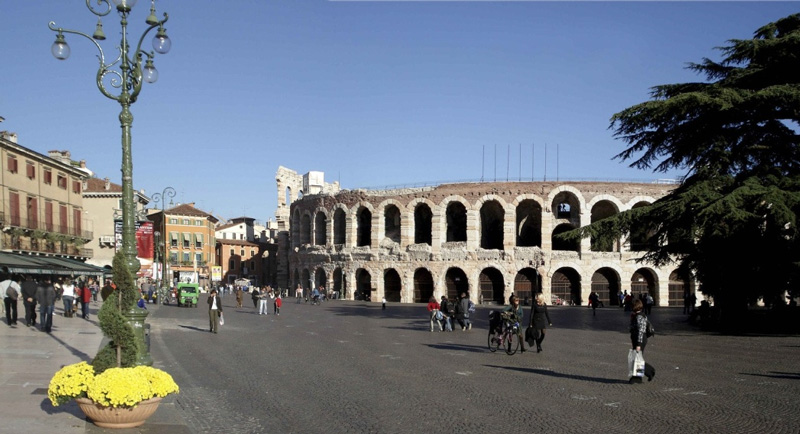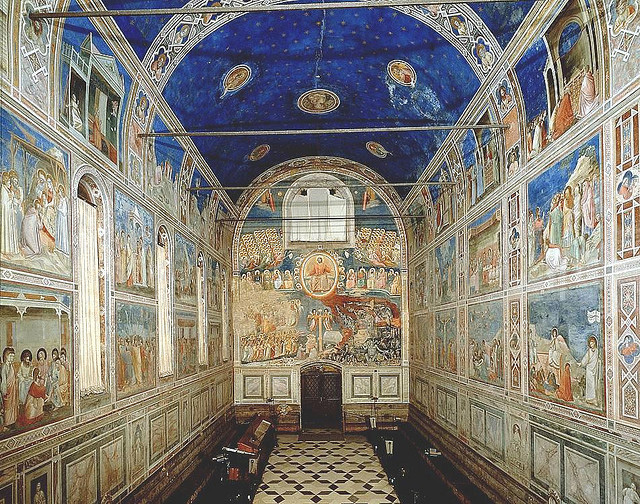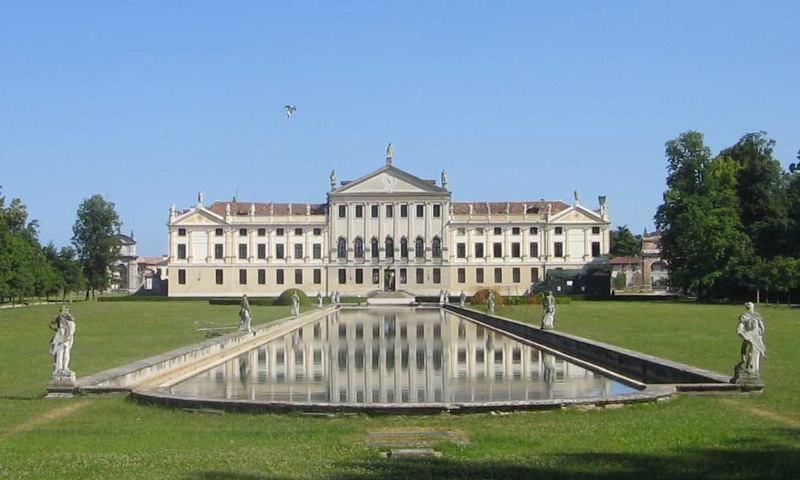5-day GIOTTO PRIVATE TOUR
Milan to Venice
WHAT'S INCLUDED:
Accommodations in Double Room with Continental Breakfast (*):
- Day 1: 3* to 5 * Hotel in Padua city centre
- Days 2 & 3: 3* to 5 * Hotel in Venice city centre
- Day 4: 3* to 5 * Hotel in Sirmione area
- Day 5: 3* to 5 * Hotel in Milan city centre
(*) The Hotel list is available upon request
Transfers (**):
- Day 1: Pick up at your accommodation in Milan and transfer to your accommodation in Padua – Stopover in Verona
- Day 2: Transfer to Venice Pier + Transfer by private water cab to your accommodation in Venice
- Day 4: Transfer by private water cab from your accommodation in Venice to Venice pier + Transfer to your accommodation in Sirmione area – Stopover in Strà
- Day 5: Transfer to your accommodation in Milan
(**)All transfers by private car (2 pax)/ minivan (3 to 6 pax)/ minibus (7 to 10 pax)
Private Guided Visits / Tours (***) / Activities:
- Day 1: 2-hour private walking tour of Verona city centre with an Authorised Tourist Guide
- Day 2: 2-hour private walking tour of Padua city centre with an Authorised Tourist Guide
- Day 3: 3-hour private walking tour of Venice city centre with an Authorised Tourist Guide – Half-hour Gondola ride
- Day 4: Visit of a Prosecco wine cellar with tasting
- Day 5: 3-hour private walking tour of Milan city centre with an Authorised Tourist Guide
(***)All tours by private car (2 pax)/ minivan (3 to 6 pax)/ minibus (7 to 10 pax)
Admission Tickets to:
- Cappella degli Scrovegni in Padua
- Saint Mark’s Basilica in Venice
- Palazzo Ducale In Venice
- Villa Pisani in Strà
- Duomo Cathedral in Milan
Full emergency assistance 24 hours/day by our Back Office
List of recommended restaurants and deli shops along the itinerary
All taxes
Options:
- Pick up at Milan Airport /Railway Station at the start of the tour
- Accommodation in Milan the night before the start of the tour
- Drop off at Milan Airport /Railway Station at the end of the tour
- Other options upon request
Day 1 – VERONA
Benvenuti in Italia, welcome to Italy.
In a stretch of land designed in accord with the bends and twists of the River Adige, we find Verona, a visually stunning city of excellence. It is a city of many faces whose history can also summarize Italy's history – think of the works left by the Romans, the Medieval streets and the “palazzi” of the Renaissance.
The city’s commercial hub is Piazza delle Erbe, where the original Roman Forum was. This piazza represents the synthesis of several different historical moments: the 13th-century buildings – among which Casa dei Mercanti (House of Merchants) stands out - the painted facades of the Mazzanti Houses and the Madonna Verona Fountain, with its central statue from the Roman Epoch. Also dating back to Roman times is the most symbolic monument of Verona, the Arena (1st century B.C.). Originally constructed to host gladiator combats, it saw a long period of abandonment before it returned to the limelight with a new form of entertainment in 1913: after having hosted the premiere of Aida in that year, it has been known around the world for the sounds of opera that emanate from its stage.
Then, Romanesque Verona lies in its imposing Duomo, as well as in the Cathedral of St. Zeno, and in Castelvecchio, which looks out from the banks of the Adige; it symbolizes the Medieval power of the Scaliger family, to whom the realization of the crenellated Scaliger Bridge is attributed.
The palazzi of Verona narrate its long history of wealth and power. In Piazza dei Signori - which sits under the dominating Lamberti Towers - the portico of the Loggia del Consiglio catches the eye; in the 16th century, political life took place here, while the Palazzo di Cansignorio and Palazzo del Comune (or “della Ragione”) were the seats of military, judicial and administrative power. Nearby lie the Scaliger Arches, in the same-named piazza, and some of the most suggestive views of the city, including glimpses of the monumental tombs of the Lords of Verona.
Finally, the Verona of Shakespeare and the “star-crossed lovers” is a worldwide legend and lives indefinitely through the places made famous in Romeo and Juliet. Yet the original literary work was created by Luigi da Porto, a writer from Vicenza, in the 1500s; it eventually circulated in Europe, reaching England. It was the Bard who rendered it the immortal story it is today, allowing Verona to rest as one of the most admired and visited places in the world.
And remember: Verona is a very elegant city, famous for its classy shops!

Day 2- PADUA
Padua is one of the oldest and most dynamic Italian cities. Founded more than 3,000 years ago along a curve of the River Brenta, today it is modern and cosmopolitan and well-known for its historic and glorious University and the innumerable art masterpieces diffused throughout the city. Padua is called “the City of Frescoes” because of its buildings' extraordinary range of frescoed surfaces. One of the main series of paintings from the 14th century is preserved in the Scrovegni Chapel, the work of the brilliant artist Giotto. A visit to the Chapel is a journey through poetry and pathos!
Its piazzas are the perfect departure point, particularly Piazza delle Erbe and Piazza dei Frutti, for centuries a daily produce market that is a cross-section of city life and commerce, as well as the ideal venue for seeing and socializing. Overlooking the two piazzas is one of Padua’s several symbolic monuments, Palazzo della Ragione, also referred to as the “Salone”. Close by is Piazza dei Signori, an elegant piazza with Renaissance touches circumscribed by famous monuments, including the Church of San Clemente, Palazzo del Capitanio, and the imposing Tower adorned with its famous Astrological Clock. Designed in the 1300s, the Clock marks the hours, minutes, months, days, moon phases, and astrological places. Also relatively nearby is Piazza del Duomo, dominated by the majestic Cathedral and the ancient St. John’s Baptistry.
Another of Padua’s symbols is Caffè Pedrocchi, built in the early 1800s. Commissioned by Antonio Pedrocchi and designed by the architect Giuseppe Jappelli, it is a beloved Paduan locale and hosts important cultural exhibits and events. The Caffè faces Palazzo Bo, the principal office of the prestigious Università di Padova. The University is the second oldest in Italy, and as a place of excellence in the sciences and culture, it boasts Galileo Galilei among its esteemed past professors. Not only, but the oldest intact anatomic theatre in the world – that can still be visited – resides here.
The Basilica of Saint Anthony, known as "The Saint", is the most important religious centre of the city and the destination of thousands of pilgrims who invade the city every year, especially on June 13, the Saint's feast. The vast building presents a characteristic fusion of styles in its complex structure: Romanesque elements in the bell-shaped facade, gothic in the plan of the ambulatory with the seven chapels, Byzantine in the eight domes covered in the lead Moorish in the two slender and slender bell towers.
In the vicinity is the oldest Botanical Garden in the world, a UNESCO World Heritage Site. Founded during the epoch of the Venetian Republic, it was conceived as a place dedicated to the study and cultivation of medicinal plants.
At dinner, look out for “Risotto Ricco alla Padovana” served with duck and chicken or “risotto with radicchio”, a vegetable grown locally, or “bigoli con ragu’ d’anatra” (little strings of pasta with a duck sauce), with a glass of white Pinot Bianco or, if you prefer, a red Merlot or Valpolicella, all produced in Veneto!

Day 3 - VENICE
Welcome to the “unique” Venice, the “city on the lagoon”! You will be astonished by its beauty and charm!
You will start your visit with Piazza San Marco (St. Mark’s Square) and the Basilica interior, a 900-year-old marvel of architecture! The church is unique in Italy for its golden Byzantine and Medieval mosaics, intricate stone and marble traceries and exuberant Middle Eastern domes. Near St. Mark’s Basilica is Palazzo Ducale, the most impressive secular building in Venice and once the official residence of the supreme authority of Venice, the “Doge”. A masterpiece of Gothic architecture, the Doge’s Palace is an impressive structure composed of layers of building elements and ornamentation, from its 14th and 15th-century original foundations to the significant Renaissance and opulent Mannerist adjunctions.
Then, you may visit Santa Maria Gloriosa dei Frari (Saint Mary’s of Friars), striking for its colossal size and the quality of its works of art, including masterpieces by Titian, Giovanni Bellini and Donatello, and several splendid tombs. Also, you may explore the streets and savour everyday life in an intricate maze of ancient narrow alleyways, lively squares with magnificent buildings and meandering canals, and finally, walk on the Rialto Bridge, Venice’s busy "heart". Last but not least, you will enjoy a Gondola ride on the city’s canals: a jump back in time when Venetians moved only on the water.
At lunch, you may savour Venice’s finger food, the famous "cicheti”. There is tremendous variety, and options include anything from simple cheese or salami to almost any kind of seafood, fried and grilled vegetables, sweet and sour sardines, creamy codfish and much more!
Rich in traditions, Venice offers a wide selection of unique artisan products. In the city of the Italian carnival, the typical Venetian masks are a must. The cost of the original ones is relatively high, but it is really worth it! Also, don’t miss an authentic Murano glass object: each product is made and painted by hand, but be sure you buy an original product from Murano, guaranteed by a label or a signature (and the seller), not a Chinese copy!
You may also enjoy an excursion to the main islands of the Venetian Lagoon: Murano and Burano. The first stop on your visit will be Murano. Here, you may visit a traditional glass atelier, where glass-making families have been carrying on the art of glass blowing for over 700 years. You’ll be amazed by the simplicity of the tools used and by the artist’s intense concentration in the heat and smoke of the burning furnace. The excursion will continue to Burano, the bustling island famous for its colourful houses and the hand-crafted lacework, true works of art made of lace that you may purchase at local shops or street stalls.
Finally, at dinner, you will be delighted by the flavours of the regional cuisine of Veneto, boasting delicious recipes such as “Sarde in saor” (marinated sardines), Risotto with seafood, or the typical “Baccala' mantecato”, to finish with a fantastic “Bussolà”, the ring-shaped and cinnamon-flavoured cake! (read more about Venetian cuisine in our BLOG).

Day 4 – STRÀ
Today you will reach the Brenta river, a direct waterway connecting the Venetian Lagoon with Padua. The two shores of the river are still animated by many attractive sites, like fancy villas, small towns and green areas.
As you approach the small town of Strà, you’ll see a long wall with wrought iron gates and a neoclassic-style façade. Here you are in Villa Pisani, once the luxury dwelling of the Pisani, one of the most powerful Venetian families in the 18th century. The building of Villa Pisani consisted of 114 rooms in honour of Alvise, the 114th Doge of Venice, and the most celebrated Venetian painters were commissioned to decorate the interiors. Also, the park is worth visiting for a pleasant walk through the Labyrinth, the elegant Coffee House, the original Stables and the 20th-century straight basin.

Day 5 - MILAN
Milan is, first of all, the Fashion Capital of Italy! The showrooms of all Italian manufacturers are located in the city, and here buyers from worldwide distribution find the one and only “Italian Style”! But Milan is not only fashion, it is also and above all art, beauty and culture! Piazza del Duomo is the geographical and historical centre of the city. Palaces surround it with arcades; in the middle, you can see the Duomo, one of Europe’s biggest Gothic cathedrals, whose construction started in the 14th and ended in the 20th century. And on the Gran Guglia, the cathedral’s highest spire, the Madonnina, a symbol of Milan, stands. On the left of the square, the 19th-century Galleria Vittorio Emanuele II links the grand Piazza del Duomo with Piazza della Scala, featuring mosaics and a wrought iron and glass roof.
Then stroll down the streets of “Quadrilatero D’Oro”, the heart of the fashion industry, admiring the shop windows of Prada, Armani, Versace, Ferragamo, Dolce & Gabbana and Valentino. The multi-concept store by Giorgio Armani, Spazio Armani, in the elegant Via Manzoni, extends for 6,000 square meters and offers fashion showrooms, furniture, flowers and hi-tech Sony equipment. After shopping, enjoy an aperitif or a coffee at the Emporio Armani Cafè upstairs or book a table at the Japanese restaurant Nobu. Or taste a gorgeous Cappuccino at Pasticceria Cova, as locals often do in via Montenapoleone, “Montenapo” for the Milanese!
At dinner, what about a tasty yellow “Risotto alla Milanese”? According to an ancient tradition, the Duomo is where Risotto alla Milanese was “born”, invented by a boy who worked for the stained glass artist Valerio di Fiandra, nicknamed “Zafferano” for its habit of adding spices to his colours. One day, he also put some saffron in the rice, and the result was a great success!
The tour is over, but the memories of a fantastic journey will accompany you for a lifetime!
Arrivederci for another tour with VITOR, Visit Italy on the Road.
